Executive Team News
-
59th IRAC International Meeting, Research Triangle Park, NC, USA
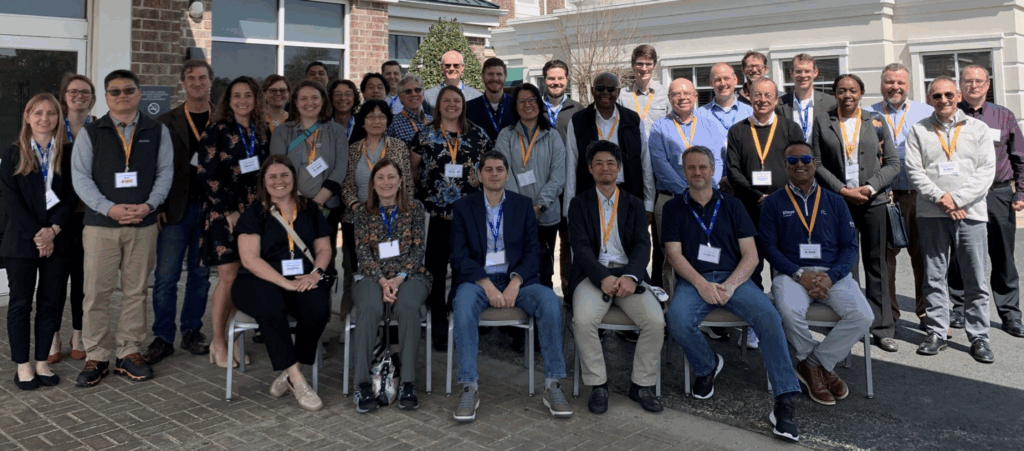
The Insecticide Resistance Action Committee (IRAC) International held its 59th Spring Meeting, from April 1–3, 2025. Representatives from global member companies, regional committees, and Working Groups came together to review progress, align priorities, and shape the strategic roadmap for the coming year.
The meeting opened with a plenary session titled “Evolving IRM Needs and Strategic Priorities for Contemporary Agricultural Practices.” IRAC members shared current challenges and future needs identified across the industry. The session emphasized aligning IRAC’s roadmap strategy with evolving agricultural realities, highlighting the growing importance of rapid knowledge exchange, regional adaptability, and cross-sector collaboration.
Day two featured presentations from IRAC’s Working Group Chairs, who reviewed key 2024 achievements and outlined priorities for 2024/25. Teams reporting included, Mode of Action, Crop Protection, Sucking Pests, Chewing Pests, Test Methods, Nematodes, Public Health and Outreach. Attendees also received updates on major regional initiatives, including, IRAC US activities and national program updates, results from Brazil’s insecticide resistance monitoring, China-IRAC’s efforts on unclassified MoAs, progress on the MSU Resistance Database and highlights from RACs at Rothamsted 2024 meeting. The day concluded with a retrospective on IRAC’s global impact in 2024 and a look ahead to emerging priorities.
The final day brought together IRAC’s Executive Committee for a strategic planning session focused on optimizing resource allocation and execution efficiency
-
Latest updates to the MoA Classification (version 11.2)
New versions (11.2, August 2024) of the IRAC MoA resources have been released and posted on the website. The changes include the following updates:
- Group 37: A new MoA Group which has been named “Vesicular acetylcholine transporter (VAChT) inhibitors”.
- Group 37: Oxazosulfyl has been moved from Group UN to the new Group 37.
- Group UNE: Sabadilla Extract has been classified as “Botanical essence including synthetic, extracts and unrefined oils with unknown or uncertain MoA”
- Group UNM: Polydimethylsiloxane (PDMS) has been classified as “Non-specific mechanical and physical disruptors”
- Group 35: Vadescana has been classified as “RNA Interference mediated target suppressor” in the MoA Classification under Appendix 6 as pending registration.
- Group UNM: Perlite has been classified as a “Non-specific mechanical and physical disruptor” in the MoA Classification under Appendix 6 as pending registration.
The updated resources, available for download from the IRAC website, are:
-
Nematicide MoA now added to the IRAC and GRM MoA Apps
When using the IRAC and GRM MoA Apps on your mobile devices, you will now be able to open the menu and select the Nematicide Classification or Structures poster using the links as an alternative to the normal insecticide and acaricide MoA. To revert back just use the menu once again.
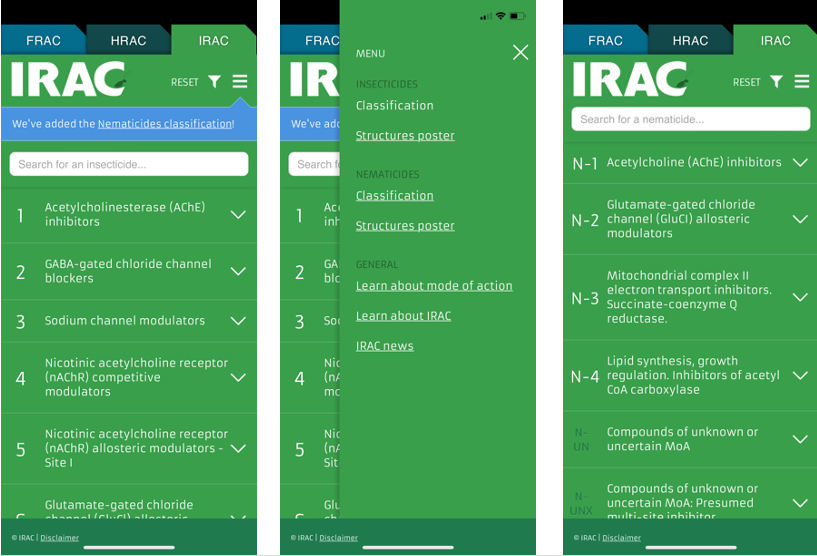
-
New versions (11.1, January 2024) of the IRAC MoA classification and associated resources have just been released and posted on the website.
The Changes include the following updates:
Group 4E Nicotinic acetylcholine receptor (nAChR) competitive modulators – New Active: Fenmezoditiaz
Group 23: Inhibitors of acetyl-CoA carboxylase – New Active: Spidoxamat.
Group 35 RNA Interference mediated target suppressors New Group and Active: Ledprona
Group UNF Fungal agents of unknown or uncertain MoA New Fungal Agent added: Akanthomyces muscarius Ve6Resources:
-
Insecticide Mixtures and Resistance Management – Updated Guidance
The combined application of two insecticides with different modes of action (MoA) is an increasingly common approach to insect pest management. Insecticide mixtures (tank-mix or pre-formulated mixture) are applied to crops for pest management for many different reasons. These reasons include to broaden spectrum, to combine different technical characteristics of insecticides, or to combine two modes of action to control species where single compound applications do not provide sufficient control. Mixing insecticides, may also offer a benefit for insecticide resistance management (IRM). In the guidance document IRAC presents an up-dated mixture statement and the key considerations supporting it.
-
57th IRAC International Meeting, 14-17th March 2023, Japan
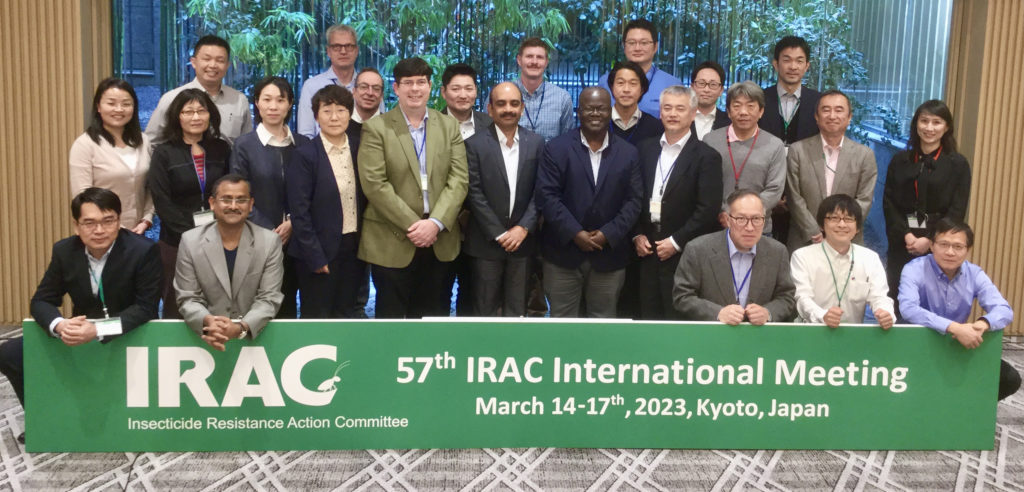
The 57th IRAC International Meeting was held in conjunction with IRAC Japan and IRAC Asia in Kyoto. This incorporated a visit to the Annual Meeting of Japanese Society of Applied Entomology and Zoology in Osaka where IRAC presentations were given in a seminar sponsored by the Japan Crop Protection Association on 14th March. Further meetings took place during the week as follows:
- 15th March: Meeting of the IRAC Executive and Crop Protection teams
- 16th March: Seminar at Kyoto university followed in the afternoon by meetings with IRAC Japan
- 17th March: Focus on IRAC Asia with presentations and discussion with various Country Teams
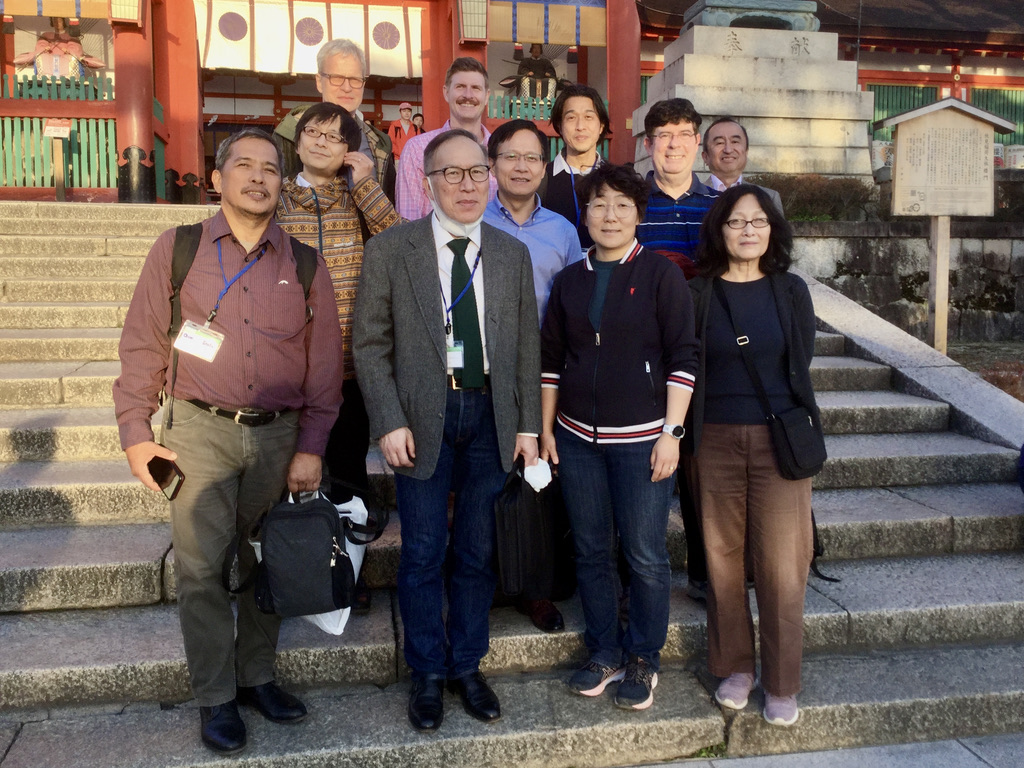
-
Latest updates to the MoA Classification
New versions (10.5, March 2023) of the IRAC MoA resources have just been released and posted on the website. The changes include the following updates:
- Group 29: Renamed to “Chordotonal organ nicotinamidase inhibitors”.
- Group 36: A new MoA Group which contains the active Dimpropyridaz, and is named “Chordotonal organ modulators – undefined target site”.
- Dicloromezotiaz, previously, in Appendix 6 (active ingredient pending registration), has been moved to Group 4E, Mesoinics, within Group 4, “Nicotinic acetylcholine receptor (nAChR) competitive modulators”.
- The new peptide, U1-AGTX-Ta1b-QA, has been classified as “Unknown or uncertain MoA – subgroup UNP (peptides of unknown or uncertain MoA)” and has been added to the Classification Scheme, Appendix 6, pending registration.
The updated resources, available for download from the IRAC website, are:
-
New IRAC, HRAC and FRAC Global Resistance Management Mode of Action App
The new Global Resistance Management (GRM) Mode of Action App, released earlier this year by the Resistance Action Committees (IRAC, HRAC FRAC), has just been updated with additional features. The App combines the information on the Resistance Action Committee’s standalone Mode of Action Apps into one application for ease of access by the user. The individual IRAC, FRAC and HRAC Mode of Action Apps are still available and all applications can be downloaded from the Apple App and Google Play stores.
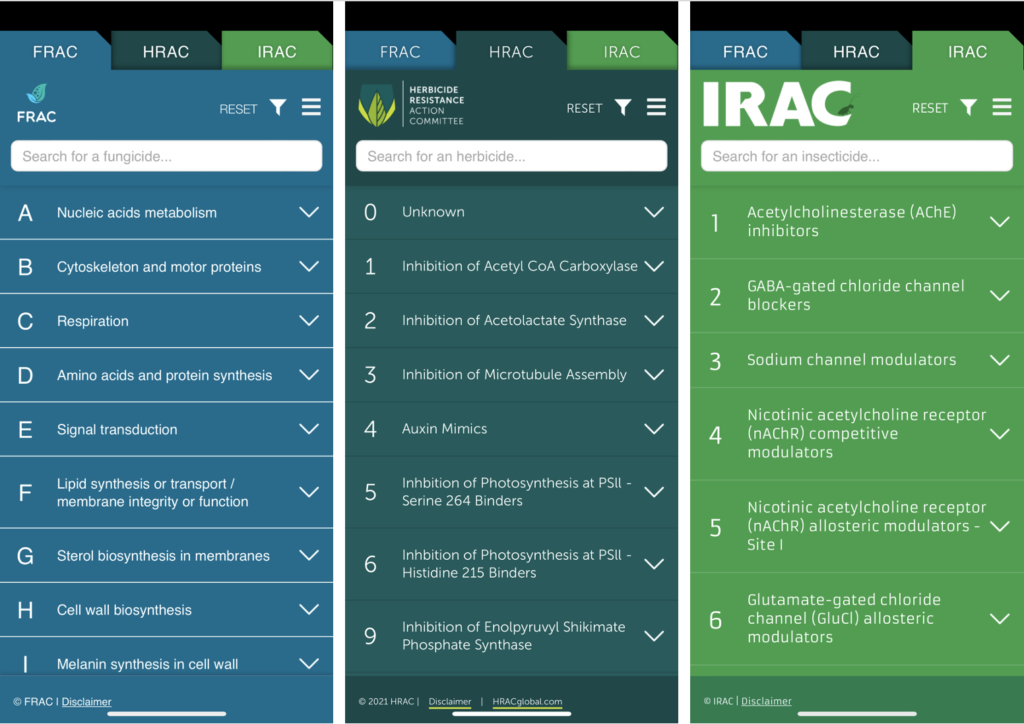
-
IRAC MoA Group 30 IRM Guidelines Published
IRAC MoA Group 30 insecticides (GABA-gated chloride channel allosteric modulators) are a new class of insecticide chemistry with first registrations in agriculture made during 2018. They represent a valuable resource for the control of insect and mite pests in many agricultural and horticultural markets and therefore it is considered essential to develop IRM guidelines to maintain their effectiveness through sustainable use.
-
Updated guidelines for rotating seed treated, soil and foliar applied insecticides
The general principles of resistance management apply to seed and soil treatments as with foliar applied insecticides, however there are some additional factors that should be considered. There are limited insecticide modes of action available for use either as soil or seed treatments, therefore, the judicious use of the available modes of action is essential for sustainable control of the insect pests targeted by these applications. The updated IRAC guidelines provide more information.